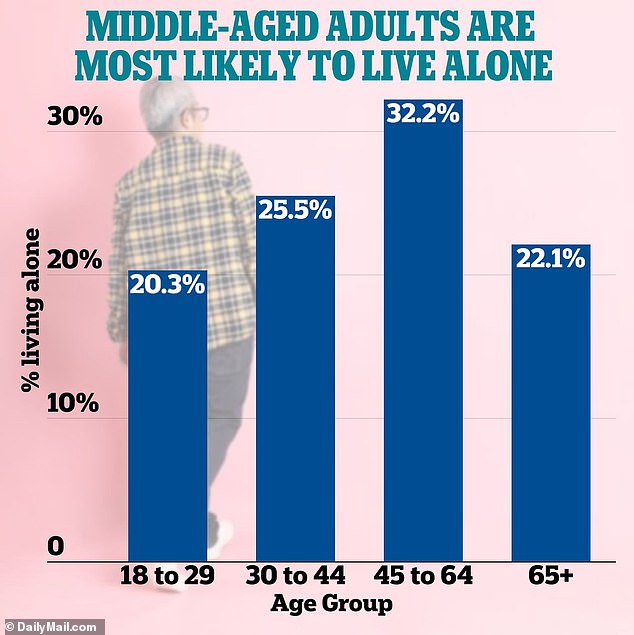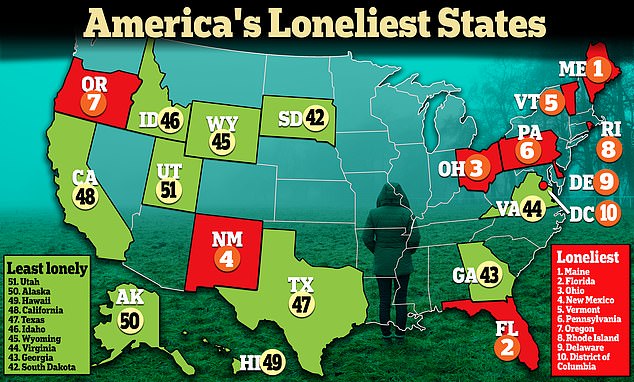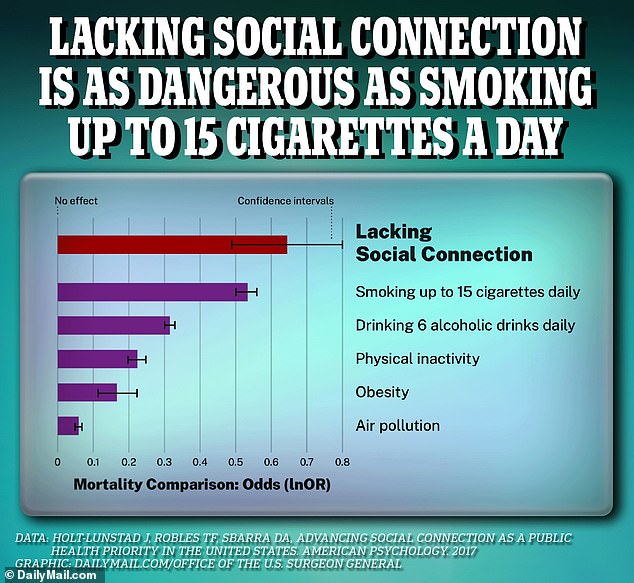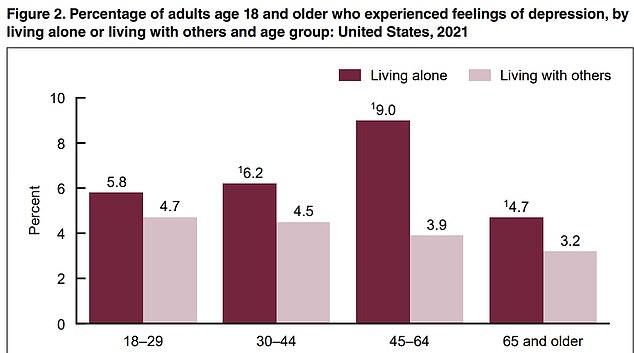America’s loneliness epidemic exposed: Nearly 40 million adults now live alone and they are 64% more likely to be depressed than their peers, an official report warns
The number of people living alone in America has reached a new record level, with experts describing the situation as an epidemic.
A report released today from the Centers for Disease Control and Prevention estimates that 37.9 million Americans lived alone in 2022, an increase of 4.8 million – 15 percent – over 2012 numbers.
The research also showed that the share of the adult population living in single-person households has doubled since the 1960s: from 13 percent to more than 29 percent.
The report warned that there is an ‘increased risk of adverse mental health’ for single people – adding that those living alone were 64 per cent more likely to have symptoms of depression than those living together.
Researchers warn that these numbers could fuel feelings of despair and the high rate of mental health problems in the US.
The graph above shows how the number of people living alone in the US has gradually increased since the 1960s. Experts say this is the ‘biggest demographic change in a century’

The above shows that adults aged 45 to 64 are most likely to live alone. Estimates come from the Centers for Disease Control and Prevention
Experts call the shift the “largest demographic change of the past century” and say it is driven by rising divorce rates and greater economic independence among women.
For the report, researchers analyzed data from the National Health Interview Survey (NHIS), which interviews 100,000 Americans annually about their living standards, including whether they live alone.
They also found that middle-aged adults – between the ages of 45 and 64 – made up the largest share of adults living alone, followed by those aged 30 to 44.
At the other end of the scale, the 18 to 29 age groups made up the smallest share of single people.
Adults living alone were evenly split between men and women.
A total of 43.2 percent had incomes about 400 percent or more than the federal poverty level — which is set at $14,580 per year for single-person households.
They were also most likely from a white ethnic background.
The results also showed that people who lived alone were more likely to report symptoms of depression.
Among this group, 6.4 percent said they experienced depressive emotions – compared to 4.1 percent among those living with others.
Middle-aged adults (between 45 and 64 years old) who lived alone reported the highest rate of feelings of depression at nine percent.
By comparison, of those in this age group who lived with others, 3.9 percent said they experienced symptoms of depression.
Dr. Laryssa Mykyta, who heads the Census Bureau’s Division of Health and Disability Statistics and wrote the report, said: ‘Previous research has found an increased risk of adverse mental health among older adults who lived with other family members and non-family members compared to those who lived with a partner. or husband.’

Maine was considered the loneliest state, followed closely by Florida and Ohio. Meanwhile, Utah was the least lonely state, with Alaska and Hawaii close behind

Living in social isolation can be as bad for your health as having almost a pack of cigarettes a day

This graph shows how those who live alone and are aged between 45 and 64 are most likely to report feelings of depression
She added: ‘Adults who live alone may differ in their reasons for living alone.
‘Some people choose to live alone, while others may live alone due to the death of a spouse or partner or the dissolution of the family.
“Those who live with others may differ by who they live with.
“Some people may live with a spouse or partner, while others may live with other family members or non-family members.”
